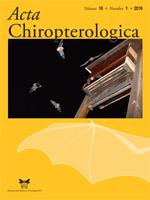The evolution of cue reception and cue production is well documented. The ability of species to use cues they did not evolve with is important in understanding flexibility in behaviour. We observed Neotropical nectar-feeding bats (Glossophaga soricina) feeding at Old World banana flowers (Musa acuminata) in a Belize garden. The flowers produce a rich source of nectar that is exposed as a bract lifts before dusk. We tested the hypothesis that the bracts serve as beacons to foraging bats and discuss this approach and the use of acoustic information by bats feeding at flowers. We ensonified a bract with cues like those of echolocating G. soricina, which revealed the production of strong echoes from the bract. Additionally, the removal of bracts from the flowers influenced the bats' flower-visiting behaviour. We suggest that the bats use the echoes from the bract opportunistically as a cue to find the nectar source. Our findings provide an example of an interaction between a plant and flower visitor not reflecting a shared evolutionary past.
How to translate text using browser tools
1 June 2016
Opportunistic Use of Banana Flower Bracts by Glossophaga soricina
Meghan Murphy,
Elizabeth L. Clare,
Jens Rydell,
Yossi Yovel,
Yinon Bar-On,
Phillip Oelbaum,
M. Brock Fenton
ACCESS THE FULL ARTICLE

Acta Chiropterologica
Vol. 18 • No. 1
June 2016
Vol. 18 • No. 1
June 2016
acoustic cues
echolocation
nectar-feeding




